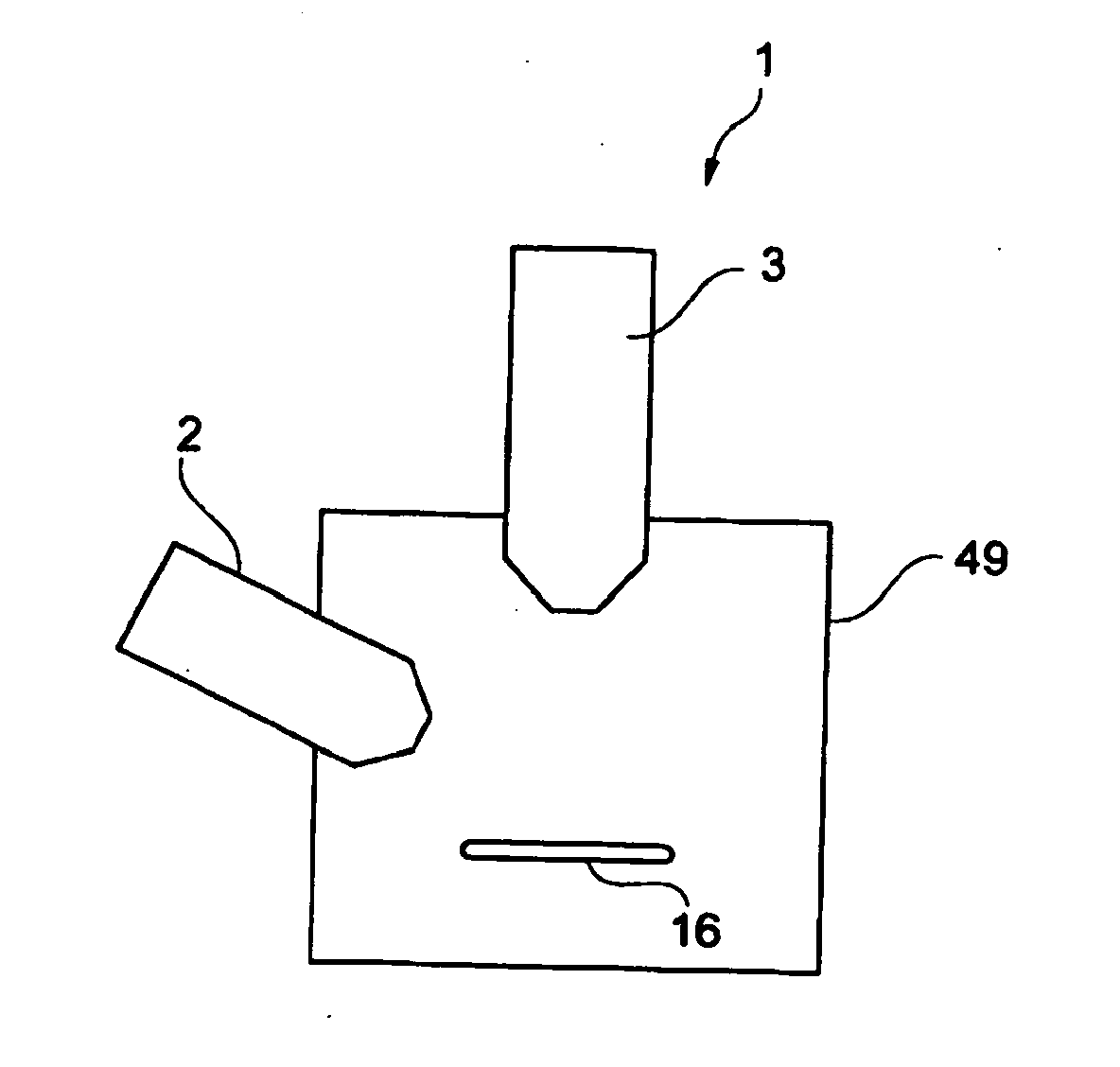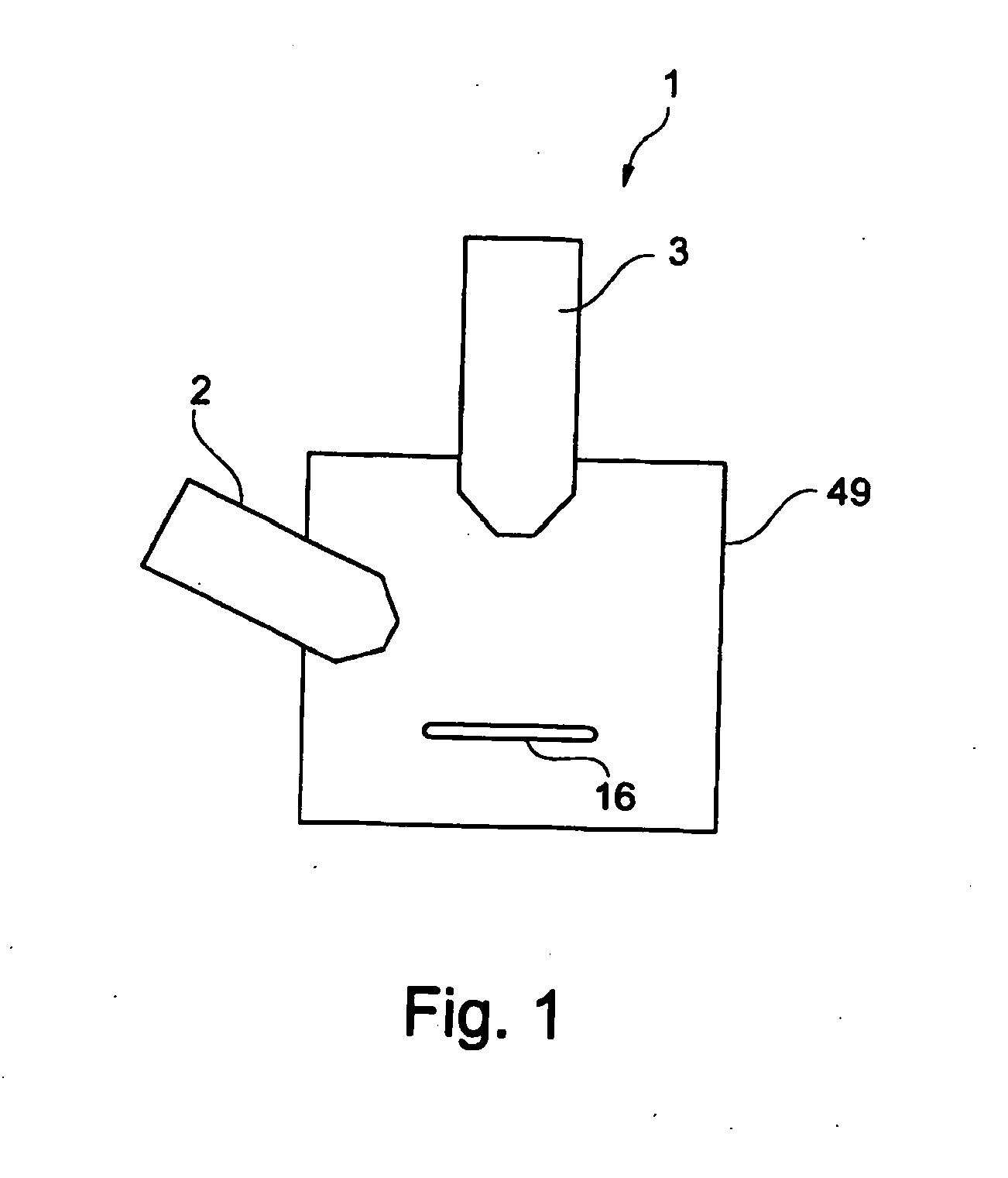Apparatus for focusing and for storage of ions and for separation of pressure areas
- Summary
- Abstract
- Description
- Claims
- Application Information
AI Technical Summary
Benefits of technology
Problems solved by technology
Method used
Image
Examples
Embodiment Construction
[0074]FIG. 1 shows a schematic illustration of one embodiment of a particle beam device 1 according to the system described herein. The particle beam device 1 has a first particle beam column 2 in the form of an ion beam column, and a second particle beam column 3 in the form of an electron beam column. The first particle beam column 2 and the second particle beam column 3 are arranged on a sample chamber 49, in which a sample 16 to be examined is arranged. It is explicitly noted that the system described herein is not restricted to the first particle beam column 2 being in the form of an ion beam column and the second particle beam column 3 being in the form of an electron beam column. In fact, the system described herein also provides for the first particle beam column 2 to be in the form of an electron beam column and for the second particle beam column 3 to be in the form of an ion beam column. A further embodiment of the system described herein provides for both the first parti...
PUM
 Login to View More
Login to View More Abstract
Description
Claims
Application Information
 Login to View More
Login to View More - R&D
- Intellectual Property
- Life Sciences
- Materials
- Tech Scout
- Unparalleled Data Quality
- Higher Quality Content
- 60% Fewer Hallucinations
Browse by: Latest US Patents, China's latest patents, Technical Efficacy Thesaurus, Application Domain, Technology Topic, Popular Technical Reports.
© 2025 PatSnap. All rights reserved.Legal|Privacy policy|Modern Slavery Act Transparency Statement|Sitemap|About US| Contact US: help@patsnap.com



